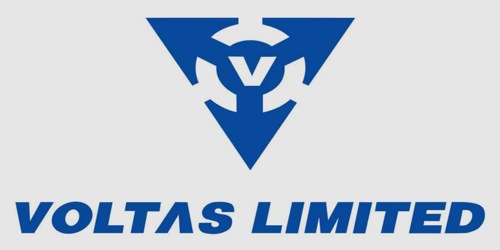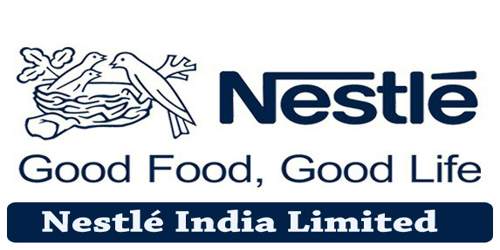L/C Operation of JBL:
L/C Opening:
Importers can import goods as entitled in each year as per import policy by opening letter of credit (L/C) through bank i.e. Authorized Dealer (AD). Authorized Dealer means the branches of commercial banks, those who are authorized / licensed by the Bangladesh Bank to deal in foreign Exchange. Before opening L/C following issues should be carefully scrutinize by the AD:
1. Registration of importers: Before any Letter of Credit (LC) is opened or remittance made for imports into Bangladesh the AD (Authorized Dealer) should verify that the importer is registered with the Chief Controller of Imports and Exports (CCI&E) or otherwise exempted from such registration.
2. Dealing with known customers: The ADs must ensure that they deal only with known customers having a place of business in Bangladesh and can be traced easily should any occasion arise for this purpose.
3. Terms of Import: Appropriate Inco-terms should be incorporated in the letter of credit/purchase contract in compliance with the IPO in force. Import shall usually be made on CFR/CPT basis (as the case may be).
4. Imports under special arrangements: Specific procedural instructions regarding imports under special arrangements or agreements (grants, loans, barters etc.) issued by the Bangladesh Bank from time to time should be followed by the Ads.
5. Use of correct HS Code: It is mandatory to use correct HS Code to indicate the classification of goods to be imported as per First Schedule of the Customs Act, 1969. The ADs should take all precautions to quote the correct ITC nos (HS Codes) of the goods to be imported, in the LCAF and the LC.
6. Pre-Shipment Inspection: Unless otherwise exempted by the Pre-shipment Inspection Act, 1999, all goods to be imported shall be inspected by an NBR designated Pre-shipment Inspection (PSI) company for quantity, quality, description, classification and price.
Open an L/C by the Importer:
Now ADs are authorized to issue ‘Letter of Credit Authorization Forms'(LCAFs) in conformity with the IPO allowing imports into Bangladesh under a request to open an L/C along with the following documents / papers :-
1) L/C application and agreement Form (Bank’s prescribed application form) with adhesive stamp of Tk. 150 (Flexible) [From June 3rd 1998]
2) Indent / Proforma Invoice / Contract – 3 copies.
3) Insurance cover note with premium paid receipt.
4) IMP from one set duly signed by the importer.
5) Any other documents if necessary.
Endorsement of LCAF:
(i) When LCs are opened, full particulars thereof must be endorsed on the back of the exchange control copy of the LCAF under the stamp and signature of the AD. The Taka equivalent of the LC opened must be endorsed on the LCAF at the ruling BC selling rate (spot), but if a forward exchange cover is provided the conversion should be made at the actual for-ward rate.
(ii) Details of amounts remitted, whether under LC or other-wise, should be endorsed on the Exchange Control copy of the LCAF together with the number of the relative IMP form. Appropriate reference to the LCs, the dates on which these were opened and remittances affected should be noted in order to identify the endorsement against any particular LC opened or remittances effected.
(iii) Before delivering the import documents to the importers, the AD should invariably endorse on the invoices accompanying the bills the amount both in figures and words which they have remitted from Bangladesh.
The ADs will not issue blank LCAFs to their clients. The importer should himself/herself sign the LCAF in the presence of an officer of the AD, an authorized official of the AD should put his/her signature with date and seal on the LCAF, evidencing verification of the importer’s signature and import entitlement as per current IPO. LCAFs remains valid for remittances for one year subsequent to the month of issuance/ month of registration (in case of registration with Bangladesh Bank).
Monthly wise L/C Opening on JBL Sonargaon Road Branch:
L/C Lodgment:
On receipt of the documents from the negotiating Bank, the L/C opening bank will make entry the particulars of the documents into Inward Foreign Bill Register and prepare the voucher by converting the foreign currency into Bangladesh Taka. This stage is known as lodgment of import bills.
The full sets of documents which are submitted by the exporter to his bank as per terms and conditions of the L/C is known as shipping documents.
The L/C opening bank may receive these shipping documents from his foreign correspondent (Bank) in two ways.
i) Documents on collections basis.
ii) Negotiated Documents.
i) Documents on collection Basis :
The shipping documents which are not negotiable by the exporter’s bank due to some discrepancies will be sent to L/C opening bank on collection basis. The collection bank (exporter’s bank) will mention the discrepancies on their forwarding schedule.
ii) Negotiated Documents
The documents which has already been negotiated i.e. the exporters bank (this bank is known as negotiating bank) has made payment to the exporter against the documents submitted by him may be termed as negotiated documents. Generally these documents are free from discrepancies. Though these documents are supposed to be free from any discrepancy, the L/C opening bank must scrutinize and confirm that there is no discrepancy in the documents.
Procedures of Lodgment:
After scrutinization, if it is fund in order the officer concerned will brand a rubber stamp “Checked and Found Correct” which will be followed by his initial.
Amount in foreign currency to be converted into Bangladesh Taka with the exchange rate (B.C selling) prevailing on the date of lodgment. Particulars of documents to be entered in the “Inward Foreign Bills Register”
Preparation of Vouchers:
The following vouchers are to be prepared :
a) Lodgment voucher:
Dr. PAD / Draft amount + Negotiation commission (if any)
Cr. H.O, I.D / (Reimbursing Bank) A/C
B) Liability voucher to be reversed which was originated at the time of opening L/C
Dr. Barkers liability on L/C (Cash)
Cr. Customers liability on L/C (Cash)
Before retirement of impart bills, the L/C opening bank will calculate the charges which are to be realized from the importer.
Retirement vouchers to be prepared:
Dr. Opener A/C
Dr. Sunday Deposit A/C (Margin on L/C)
Cr. PAD / Draft Amount
Any other charges vouchers if necessary.
Scrutiny of Documents:
The L/C opening bank being received the documents from the negotiated bank will scrutinize the documents with the respective L/C terms and condition.
i) Forwarding schedule of Negotiating Bank
– Whether there is any instruction.
– Whether these instruction can be complied with.
– Whether the negotiating commission realized.
ii) Bill of Exchange (Draft)
– Whether it is drawn in order.
– Whether the amount of draft corresponds with the L/C amount.
– Draft amount should be equal or less than the L/C amount.
– Whether the date of the draft of the within the date as per L/C etc.
iii) Bill of Lading (B/L)
– Whether the B/L is clean i.e. there is no clause like some cartons are broken or any other clause.
– Whether there is signature of shipping Authority.
– Whether the date of B/L is within the date of shipment as per L/C.
– Whether the freight is prepared or not as per L/C terms.
– Whether the part of shipment and part of destination are similar as per L/C.
– Whether the title of B/L belongs to L/C opening bank.
– Whether the full sets of B/L dispatched by negotiating bank etc.
iv) Commercial Invoice
– Whether the full particulars of goods have been incorporated.
– Whether the amount of invoice corresponds with the amount of Bill of Exchange and as per the L/C terms.
– Whether IRC No. LCA No etc. have been incorporated.
– Whether it is signed by the beneficiary.
v) Other Documents
– Whether all other documents are prepared as per L/C.
After securitization, the official concerned may found the following:
i) Documents are in order i.e. no discrepancy.
ii) Minor discrepancy-Acceptable to the importer.
iii) Major discrepancy-May is acceptable to the Regulation or those are irremovable.
After performing necessary formalities & entry in respective registers documents to be handed over to the importer on proper acknowledgement after certification and endorsement of the documents.
Payment against Documents (PAD):
Banks deal in documents and not in goods. If the shipping document against the L/C is in order then the L/C opening bank must have to payment to the foreign bank within 3 days or 72 hours according as Uniform Customs and Practice for Documentary Credit (UCPDC) 600 of revision of ICC.
Monthly return:
On the last working day of the month returns of bills lodged during the month through IMP From to be sent to Foreign Exchange Department, Bangladesh Bank.
Disposal of IMP form:
Original = From L/C opening bank to Bangladesh Bank after lodgment of documents.
Duplicate = To be filled by the L/C opening bank with exchange control copy of Bill of Entry submitted by the importer after clearance of the goods from the customs authority.
Triplicate = Office copy of L/C opening bank.
Quadruplicate = From L/C opening to Bangladesh Bank if the importer does retire the documents.
Monthly wise L/C Lodgment on JBL Sonargaon Road Branch:
L/C Closing:
After preparing the lodgment retirement voucher L/C should be closed. But in case of L/C Closing Bill of Entry must be required within 120 days for opening date of this particular L/C. Bill of Entry is a document which contains declaration (on a prescribed form) by an importer or exporter of the exact nature, precise quantity and value of goods that have landed (entered inwards) or are being shipped out (entered outwards).
Online Operation of LC:
LC Monitoring System is one of the more secure application operated by the Bangladesh Bank. This site is available only for authorized users on all working days
from 08:00 AM to 08:00 PM Bangladesh Standard Time (BST). JBL have been granted the right to access these applications and the information contained in them to facilitate their official business with the Bangladesh Bank. Misuse of this access rights may result in denial of further access. Accounts and passwords are ADs responsibility and they cannot share them with anyone.
Scheduled Bank users are able to perform following functions:
- Submit L/C Information
- Submit B/L Information
- Submit New AD Branch Information
- Print/save customized reports
Procedure to Sign In LC Monitoring System:
- Select User Type from the list.
- Type/Insert User Name.
- Type Password.
- Click on the Sign In button.
Submit Import L/C Information:
Import LC Information consists of 3 Sections.
- LC Basic Information (Section 1 of 3)
- LCAF Information (Section 2 of 3)
- LC Product Information (Section 3 of 3)
Step 1: Add LC Basic Information:
Select L/C opening Branch from the AD (Authorized Dealer) Branch list
Basic Information:
- Insert 12 digits L/C Number.
- Select L/C Opening Date from the available calendar.
- Select L/C Expiry Date from the available calendar.
- Insert L/C Value and select Currency from the list.
- Select Delivery Terms from the list.
L/C Detail Information:
- Insert Mode of Payment such as At Sight, 30 Days DA, 45 Days DP etc.
- Select L/C Status (Confirmed/…) from the list.
- Select Transferable (Yes/No) from the list.
- Select Third Section Shipper (Yes/No) from the List.
- Select Trans Shipment (Prohibited/Allowed) from the list.
- Select Section Shipment (Prohibited/Allowed) from the list.
Importer Information:
- Insert BIN (Business Identification Number).
- Insert TIN (Tax Identification Number).
- Insert IRC (Import Registration Certificate) Number, if any.
- Insert Importer Name. (Keeping Tick mark on Save/Update this Importer will Save/Update Importer in Importer List. Importer can be selected from the List).
- Insert Importer Address with Telephone Number
- Insert Post Code
- Select District from the List.
- Select Thana from the List.
- Insert name of Advising Bank (if any).
Exporter Information:
- Insert Exporter Name. (Keeping Tick mark on Save/Update this Exporter will Save/Update Exporter in Exporter List. Exporter can be selected from the List).
- Insert Exporter Address with Telephone Number
- Select Country from the list.
Step 2: Add LC Authorization Information:
If L/C Basic Information successfully saved, Next Section L/C Authorization Information will be available at the end of the Page.
- Insert LCA Number.
- Select LCA Date from the available calendar.
- Insert Remarks.
Step 3: Add LC Product Information:
If L/C Authorization Information successfully saved, Next Section L/C Product Information will be available at the end of the Page.
- Insert HS Code of the Product.
- Insert Product Description.
- Insert Quantity and select measuring unit (such as MT, Barrel, Ton etc) from the list.
- Insert Tolerance (for +-5% tolerance, use 5 only).
- Insert Unit Price and select Currency from the list.
- Insert Total Price and select Currency from the list.
- Select Product Origin (Country Name) from the list.
- Select PSI (Pre Shipment Inspection) Company Name from the list
Updating Import LC Information:
- Modify expected values for Sections of Basic Information, L/C Detail Information, Importer Information, and Exporter Information.
- If it is L/C Amendment, in the L/C Amendment Information Section, Provide Amendment No, Amendment Date and Amendment Remarks.
- Click on [Save/Update].
Submit Import B/L Information:
Step 1: Add Import BL/AWB/RWR/TR Information (Section 1of 3):
Select L/C opening Branch from the AD (Authorized Dealer) Branch list
BL/AWB/RWR/TR Details:
- Insert B/L Number.
- Insert 12 digits L/C Number.
- Insert ETD Date and ETA Date. (If any)
- InsertShipmentPort Code. (To Search a Port Select Country for the Port, clicking on Search right next to Country the Port List will Pop-up. Clicking on SpecificPort, this will populate Port Code).
- Insert Shipment Date.
- Insert Carrier Name and Country.
- Insert Negotiating Bank and Country. (If any)
Step 2: Add Payment Details (Section 2 of 3)
If Import Bill of Lading Information successfully saved, Next Section B/L Payment Details (Section 2 of 3) will be available at the middle of the Page.
- Insert Payment Serial Number.
- Insert Bill Amount, Remit. Amount, Charge Amount.
- Select Currency.
- Insert Exchange Rate.
- Insert Remit. Date.
- Insert PAD Number and Date.
- Insert Remarks (If any).
Step 3: Add Product/Item Details (Section 3 of 3)
If Import Bill of Lading Information successfully saved, Next Section Product/Item Details (Section 3 of3) will be available at the end of the Page.
- Select HS Code of the Product.
- Insert Product Description.
- Insert Quantity and select measuring unit (such as MT, Barrel, Ton etc) from the list.
- Insert Unit Price and select Currency from the list.
- Insert Total Price and select Currency from the list.
- Select Product Origin (Country Name) from the list.
- Select PSI (Pre Shipment Inspection) Company Name from the list
- InsertDischargePort Code and Date.
- Insert Remarks. (If any)
Submit Import L/C Payment Information:
How to Submit L/C Payment Information? Once Import L/C and Import B/L entered, L/C Payment Information can be entered. To comply L/C payment requirement, multiple payments can be entered against one L/C and a payment can be entered for multiple B/L. This entry form is only available for Bank Head Office and AD Branch users.
To Enter L/C Payment Information, users will do the following:
- Select L/C Opening Branch from the AD (Authorized Dealer) Branch list
- Insert LC Number to be found. Click on Find icon immediate after the L/C Number
Add Payment Details (Section 1 of 1):
After find the L/C number, the entry form will display L/C Information and the below of L/C information, Payment Input facilities is available.
- Insert Payment Serial Number.
- Insert Bill Amount, Remit. Amount, Charge Amount.
- Select Currency.
- Insert Exchange Rate.
- Insert Remit. Date.
- Insert Discount Receivable Amount, Transport Charges Amount (If any).
- Select B/L Numbers from the Left B/L List to right B/L List. (Use [Add >] button. If User want to remove Selected B/L Number(s), need to select B/L Number from B/L selected List which is right sided and need to click on [< Remove] button)
- Insert PAD Number and Date.
- Insert Remarks (If any).
(Once L/C Payment is Saved/Updated, no provision to delete.)
Back To Back (BTB) L/C:
Back-to-back (Pre-shipment Financing) L/C means one credit backs another credit. It is new credit in favor of another beneficiary. Sometimes beneficiary/seller of a credit himself is unable to supply goods specified in the L/C and required to purchase from another supplier by opening second credit.
JBL may open back to back (BTB) import LCs against export LCs received by export oriented industrial units operating under the bonded warehouse system, subject to observance of domestic value addition requirement prescribed by the Ministry of Commerce from time to time.
Regulations for opening BTB Import L/C:
Following instructions should be complied with while opening back to back import LCs:
(i) Only recognized export oriented industrial units operating under bonded warehouse system will be allowed the back to back LC facility. The unit requesting for this facility should possess valid registration with the CCI&E and valid bonded warehouse license.
(ii) The master export LC (against which opening of back to back LC is requested) should have validity period adequate to cover the time needed for importation of inputs, manufacture of merchandise and shipment to consignee.
(iii) The back to back LC value shall not exceed the admissible percentage of net FOB value of the relative master export LC (as per prescribed value addition requirement) and the price of goods to be imported must be competitive.
(iv) The back to back import LCs shall be opened on usance basis for a period not exceeding 180 days. Back to back LCs opened against (a) Export Development Fund (EDF) administered by Bangladesh Bank and/or against (b) balances on Non-Resident Foreign Currency Deposit (NFCD) Accounts may be on sight basis subject to the instructions.
(v) All amendments of the master export LC should be noted down carefully to rule out chances of excess obligation under the back to back import LC.
(vi) Back to back import LC should not be opened against LCs received for export under Barter/STA, without prior approval of Bangladesh Bank.
Inland back to back LCs:
Inland back to back LCs denominated in foreign exchange may be opened in favour of local manufacturer-cum- suppliers of inputs, against master export LCs received by export oriented manufacturing units operating under the bonded warehouse system, up to value limits applicable as per prescribed value addition requirement/utilization permit. However, EXP/IMP form will not be applicable in such cases unless EPZ unit is associated.
Procedure for opening BTB Import L/C:
Besides, the normal formalities and requirements (for L/C opening) the following formalities and documents are also required for opening back-to-back L/C:
1) Master L/C
2) Valid bonded were house license
3) Quota allocation for quota items
4) ERC in addition to IRC
5) Indemnity/undertaking
6) No objection from previous banker (if any)
7) Factory inspection certificate
8) BGMEA Membership
Vouchers and accounting treatments are the same normal L/C opening except margin. In this case, no margin is taken by the bank. After lodgment, maturity date of the import bill is intimated to foreign bank as per L/C terms. The documents are delivered to the order of opener duty indorsed for clearance of goods from custom authority. Goods are cleaned through approved clearing and forwarding agent of the bank.
Preparation of Vouchers :
The following vouchers are to be prepared :
Banker’s liability for L/C——Dr.
Customer’s liability for L/C—- Cr.
Reversal of contra Lodgment:
Customer’s liability on IFBC L/C——Dr
Party’s A/C ———Dr.
Income A/C Bank charges—–Cr. (if any)
Payment settlement against BTB LCs:
Payment of Import bills is at maturity from the relative export proceeds repatriated. The required foreign exchange for payment of import bills is kept in a separate account, out of repatriate proceeds of relative export. Party wise and export L/C- wise funds are kept in FBPAR (Foreign Bills Awaiting Remittance) account from export proceeds for payment of bills at maturity.
Payment abroad in settlement of usance bill against the back to back import LCs shall be made at maturity, out of proceeds of the relative export repatriated in foreign exchange; the required foreign exchange will be set aside, out of the export proceeds, in a separate
Foreign currency account in the subsidiary ledger of the JBL. Cases of failure of export against the relative master LCs should be reported to the National Board of Revenue (NBR) and the concerned Commissioner of Customs so that they may monitor closely the level of stock of the relative goods in the bonded warehouse.
The AD should maintain effective watch on the stock of inputs procured under the back to back arrangement and of finished products made therewith; any indication of illegal disposal of stocks from the bond coming to the knowledge of the AD should immediately be reported to the concerned commissioner of customs and NBR.
Payment of import bills (other than BTB) from direct and deemed export earnings:
If import bills (other than back to back LC) fall due for payment within 30 days from the date of receipt of export proceeds by the exporters/deemed exporters, the ADs may, on application by the manufacturers-cum-exporters retain such proceeds in foreign exchange for a maximum period of 30 days for making such import payments even it exceeds the allowable retention quota limit. To identify such transactions distinctly, JBL should maintain appropriate register and other necessary records.
Loan Against Imported Merchandise (LIM):
Import Finance plays vital role in a country’s foreign trade business. Import of goods and service are needed no only for export production but also to supply domestic industry with the necessary inputs which are not locally available or available at uneconomic cost and are needed for expansion and development.
Cases of LIM Account:
LIM Accounts may be created in the following two cases:
a) LIM Account on importer’s request.
b) Forced LIM Account.
a) LIM Account in importer’s request:
After lodgment of documents, the importers concerned to be intimated for early retirement of the documents by paying outstanding bill amount including other charge. If the importer is not in a position to retire the bill out of his own sources at that moment may request the bank to clear the goods by creating LIM Account.
Efforts should be taken so that at least 20% to 30% margin of the landed cost may realise from the importer. Realization of margin will depend on the banker customer relationship and also on the marketability of the goods.
The following charge documents have to execute by the importer:
i) DP Note (Demand Promissory note).
ii) Letter of Arrangement.
iii) Letter of Disbursement.
iv) Letter of pledge.
v) Any other document of necessary.
The branch Manager is not empowered to sanction the LIM A/Cs in favors of the importers for clearance the goods without obtaining the approval from Head Office.
The following accounting entries and vouchers are generally to be passed in the set of Retirement Vouchers on the same day at the branch:
Dr. Customer A/C
Dr. LIM
Cr. IBTA / Pay order
Cr. PAD
The particulars of LIM A/C must be entered and voucher to be posted in the LIM Register.
b) Forced Lim Account:
Immediately after lodgment of documents the branch incumbent and concerned dealing official shall vigorously pursue importers far retirement of bills. PAD should not remain outstanding fare more than 30 days from the date of lodgment on as per norms.
If the party fails to retire the documents within 30 days or within the date of arrival of ship whichever is earlier the branch should sent the documents for clearance the goods. Other formalities in connection with the forced LIM A/C will be the same as in the case of LIM A/C created on importer’s request.
Disposal of LIM stocks:
a) The LIM liability should be adjusted within a maximum period of 45 days from the date of storage for commercial importer and 60 days for industrial importers. (It may very as per circular)
b) Part delivery against payment may also be allowed if so desired by the party to clear the LIM liability within the aforesaid time, after recovery margin over the landed cost if possible, but such payment should be proportionate with outstanding LIM liability taking into account the interest, go down rent and other charges up to eventual date of final delivery.
c) Additional 30 days may be allowed to both commercial and industrials, if so approached by them for final adjustment. In the event of importer’s failure to lift the goods on payment of bank’s dues in full even within the extended period of 30 days, the following steps shall be taken by the branch incumbent:
i) Final notice shall be issued on importer’s giving 15 days time for payment.
ii) Incase on response is received from importer legal notice shall be served on the party giving another 15 days time for payment.
iii) In case the concerned borrowers do not liquidate the liability within the stipulated time limit, but come forward with prayer for further time, in such cases branch incumbents may allow further 30 days time only provided he is satisfied that importer will be in a position to repay the outstanding dues within the extended period under advice to Head Office.
iv) In case the party fails to liquidate their liability within the extended time, the goods should be disposed off in public auction.
v) For disposal of the import consignment, a Disposal Committee shall be constituted by Head Office on receipt of a report form Branch incumbent that the consignment need to be disposal off by public auction as per Head Office standing instruction.
vii) The committee may also reject the highest offer if the price quoted is less than the normal market price and shall immediately call for fresh tenors.
viii) It there be any shortfall after disposal of goods, a case should be filed for the recovery of the short full amount, in the court of law immediately against the importer / guarantor concerned under intimation to Head Office.
ix) The branches shall invariably send monthly LIM statement on the prescribed form duly filled in as usual to Head Office.
Letter of Trust (LTR):
By executing the standard letter of trust (or trust receipt) the customer acknowledges receipt of the documents of title to the goods, as the case may be and agrees to hold them and the relative goods, when delivery thereof is taken by him, in trust as agents for the bank until the goods are sold or used for the express purpose for which they were released to him. The customer also undertakes to keep the transaction separate and assign and deposit with the bank the sale proceeds immediately realization but in any case not later than time period stipulated in the letter. Further, the customer undertakes to keep the goods insured and in the event the goods or may part thereof cannot be used by him for the declared purpose or on demand being made by the bank for the return of the documents / goods, he promised to restore the goods or documents to the bank’s custody. The trust receipt, thus, enables the importer customer to take re-delivery of the documents pledged to the pledge bank.
Remittance:
ADs may maintain foreign currency accounts in freely convertible currencies with their correspondents/branches abroad. The foreign currencies held by ADs shall at all time be deemed to be held at the disposal of the Bangladesh Bank. The Bangladesh Bank, through its Foreign Exchange Policy Department, may give such instructions with regard to the disposal of such currencies as it may deem necessary and expedient. Bangladesh Bank sets prudential limits on each AD bank’s open (overbought/oversold) exchange position. The AD should ensure that the prescribed open position limit is not exceeded
In pursuance of the ‘Guidelines on Managing Core Risks in Banking’ to be followed in case of foreign exchange risks for reconciliation of nostro accounts, banks are required to submit a comprehensive review of all nostro accounts containing a complete list of all un-reconciled entries at the end of each quarter of the year; the list to be prepared by officials who have no involvement in the transaction and approval process of the nostro accounts.
Outward Remittances:
All remittances from Bangladesh to a foreign country or local currency credited to non-resident Taka accounts of foreign banks or convertible Taka account constitute outward remittances of foreign exchange. In all cases of purchase of foreign currency, an application must be made to an AD. For payments against imports into Bangladesh, the prescribed application form is form IMP and for other types of remittances from TM.
Applications for Bangladesh Bank’s prior approval for outward remittances, wherever required, should be submitted to the Bangladesh Bank only through the ADs and not by their customers directly; all such applications should be forwarded by the ADs to Bangladesh Bank by their own messengers or by post.
Inward Remittances:
The term “Inward Remittances” includes not only remittance by T.T., M.T., Drafts etc., but also purchases of bills, purchases of drafts under Travelers’ Letters of Credit and purchases of Traveler’s Cheques.
The ADs may freely purchase foreign currencies or raise debits to non-resident Taka Accounts of the respective bank branches and correspondents. Remittances equivalent to US$ 2000 and above should be reported on Form C attached to the appropriate schedule. However, declaration on Form C by the beneficiary is not required against remittances sent by Bangladesh nationals working abroad. The purpose of remittances should be clearly stated on the Form C.
Commercial Remittances (Other than for Imports):
Remittances of freight and passage collections by branches or agents of foreign airlines and shipping companies should be made to the ADs on Form TM accompanied by a declaration in Form FP along with the following:
(a) Import/export freight manifest.
(b) Encashment certificate in support of inward remittances received from head office/principal abroad.
(c) Authenticated copy of the charter party in case of vessel chartered by the principal of the shipping agent in Bangladesh.
JBL may remit abroad costs/fees on account of their own subscription to SWIFT service provider without prior Bangladesh Bank approval.
Private Remittances:
Foreign nationals leaving Bangladesh permanently after expiry of period of service in terms of relevant employment contracts may transfer abroad their genuine savings out of salaries/benefits clearly stated in the employment contracts duly approved by the Board of Investment (BOI). They shall also be eligible to transfer abroad the retirement benefits such as provident fund, pension, gratuity due as per employment contracts approved by the BOI.
Required document:
(a) TM Form duly filled in and signed by the applicant.
(b) A certificate from the employer showing:
(i) Net salary and allowances for each year,
(ii) Provident Fund and leave salary paid on retirement,
(iii) Bonus and other gratuitous payments for each year,
(iv) Whether the cost of passage for self and family is being paid by the employer.
A certified true copy of the employment contract approved by BOI/the appropriate Department of the Govt. of Bangladesh should be produced in support of the above.
Foreign Remittance:
Remittance services are available at all branches and foreign remittances may be sent to any branch by the remitters favoring their beneficiaries. Remittances are credited to the account of beneficiaries instantly through Electronic Fund Transfer (EFT) mechanism or within shortest possible time.
JBL has correspondent banking relationship with all major banks located in almost all the countries/cities. In order to encourage wage earners for remitting funds through banking channel and ensure smooth facilities of remittance, JBL is in constant efforts to make arrangements with reputed exchange houses all over the world. JBL has already signed arrangements with Moneygram, Placid, Homelink, Raffels, Euro-bangla, and Romana Money Services. For providing supports to NRB’s Remittance cell has already been established in the Head Office under personal banking division which is equipped with modern technology for ensuring prompt delivery of remittances and replies to wage earners’ and beneficiaries’ quires. Total remittance business was TK. 3165 million in 2008 and TK. 2506 million in 2007.
Submission of Return of Foreign Exchange Transactions:
1. Authorized Dealers must maintain proper records of all in foreign exchange including transactions on non-resident Taka dealings accounts in their books.
2. Authorized Dealers must submit Returns and Statements to the Bangladesh Bank as prescribed in this Chapter. Where there is no transaction to report during a particular period, a NIL Return/ Statement should be submitted. The Returns/ Statements must he submitted to the Bangladesh Bank within the prescribed dates. These Returns/ Statements are of great importance to the Bangladesh Bank and it is essential, therefore, that care should be taken by the Authorized Dealers to ensure that all transactions are correctly reported and the relative forms are properly filled in.
3. The system of reporting transactions is designed to compile figures on the basis of actual entries in the currency accounts so that there are no Suspense items. Authorized Dealers should report transactions as per following procedure:
(a) Exports:
(i) Export bills drawn under confirmed and irrevocable Letters of Credit: Transactions in respect of export bills negotiated by Authorized Dealers should be reported as purchases only at the time entries are made in the currency account duly supported by EXP Form.
(ii) Export bills drawn on collection basis: Sometimes Authorized Dealers also purchase export bills drawn on collection/CAD basis. Transactions relating to such export bills should be reported as outright purchases against “Exports” in the Summary Statement after the transactions are put through the currency account on receipt of advice of realization of the export proceeds.
(b) Other Receipts: Purchases in respect of DDs and MTs etc. should be reported only when the transactions are put through the currency accounts.
(c) Imports:
(i) In case of import bills drawn under Letters of Credit, the foreign currency accounts of the Authorized Dealers are debited at the time of negotiation of documents by their foreign correspondents. Accordingly, sales on account of import bills drawn under confirmed and irrevocable Letters of Credit should be reported when the transactions are put through the currency account on receipt of import documents and not on the basis of retirement of bills by the importers.
(ii) All sales on account of imports are required to be supported by the original copy of the IMP Form. In view of the time lag between the date of receipt of the import bills and the date of their retirement by the importers it may not be possible to submit original copy of the IMP Form duly signed by the importers.
(iii) With regard to import bills received on collection/ CAD basis, the transactions will be reported on Schedule E-2 supported by original IMP Form.
(d) Other Payments:
Transactions in non-resident Taka accounts of foreign banks and correspondents including barter accounts should also be reported by Authorized Dealers.
4. Authorized Dealers themselves shall make arrangements for printing of Forms and Returns from time to time which should conform exactly to the size, color, contents and format as prescribed by the Bangladesh Bank, in the following manner:
(a) The stubs provided on the forms EXP and IMP will be filled in by Authorized Dealers in the following manner: The first three boxes of EXP and IMP number will bear Authorized Dealer’s branch code assigned by the Bangladesh Bank and the next five boxes are meant for mentioning the serial number of Register of Issuing Forms maintained at the bank and the last two boxes are meant for mentioning the last two digits of the year of registration. (b) Forms and Schedules other than TM, IMP and EXP will not bear any serial number. (c) Size of different Forms, Statements, and Schedules etc. will be as under:
| Name of Forms, Statements, etc. | Size | Combined Heading |
| Length | Breadth | |
| Forms EXP, IMP, TM and Statements S-1, S-2, S-4, S-5S-6, FCS-7 and EFCS-8 | 36 cm | 23 cm |
| All Schedules | 30 cm | 21 cm |
(d) Papers of the following colors should be used for printing the various Summary Statements:
| Name of Statement | Color |
| S-1 | Light green |
| S-2 | Light blue |
| S-4 | Orange |
| S-5 | Pink |
| S-6 | White |
| Statement for reporting | |
| EPZ transactions | Light yellow |
| FCS-7 | Light gray |
| EFCS-8 | Grey |
Authorized Dealers should take utmost care in the printing of these Forms exactly as prescribed, and should ensure adequate supply of Forms to their customers to avoid any complaint of non-availability/ scarcity.
5. Authorized Dealers are required to furnish half yearly returns to the Bangladesh Bank as of end June and end December showing the balances held by them in blocked accounts. This Return should reach the Bangladesh Bank by the 7th July and 7th January respectively. This return should show account holders resident in each country separately. Nil Return should be sent. The Returns as of 30th June and 31st December should reach Bangladesh Bank by the 7th of July and January.
6. Authorized Dealers shall submit to the Foreign Exchange Policy Department, Bangladesh Bank, Head Office, and Dhaka a weekly statement reporting their exchange position (overbought /oversold) as at close of business every Thursday. The statement shall be in a consolidated form covering positions in all currencies, converted to equivalent US dollars.
BIBLIOGRAPHY
Books:
1. Madura Jeff, International Financial management, 8th edition.
2. Rose S. Peter, Commercial Bank Management, 5th edition.
Different Bank Publications:
1. JBL General Banking Policy Book
2. Credit Risk Grading Policies of JBL
3. JBL Foreign-Exchange Banking policy guideline
4. Annual Report of JBL year 2007
5. Annual Report of JBL year 2008
Website:
- www.jamunabankbd.com
- www.bangladeshbank.org.bd
3. www.iccwbo.org
















